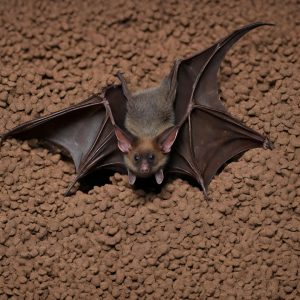Top 10 Signs You Have a Pest Infestation in Your Home
Detecting a pest infestation early can save you from costly repairs, health risks and the general stress that comes with it. Whether you’re dealing with rodents, insects, or other unwelcome wildlife, knowing what to look for is key. Below are the ten critical warning signs that something unwanted has moved in, and why each one matters.
1. Unusual Droppings or Urine Trails
One of the most obvious indicators of a pest infestation is droppings or urine trails. Rodents often leave small, pellet-shaped droppings. Common areas to find droppings are inside cupboards, behind appliances, or along baseboards. Insects may leave specks of feces in dark corners or food storage areas. These signs aren’t just unpleasant, they point to active feeding and nesting zones. Unfortunately, that means pests have already established themselves.
What to look for:
- Small dark pellets (often rodent droppings).
- Oval-shaped droppings or tiny specks (for insects).
- Urine smears or trails (especially near walls or along baseboards).
2. Gnaw Marks, Chewed Wires, and Scratches
Pests don’t just hide, they leave traces of their presence by damaging your home. Structural damage may occur if pests burrow into wood or insulation. Wires, wood trim, insulation, even plastic containers all make perfect chew toys for rodents to chew. Gnaw marks, ripped insulation, and shredded materials are strong evidence that a pest is active. Getting ahead of an infestation can prevent expensive repairs.
What to look for:
- Wires with bite marks.
- Shredded insulation or nesting material.
- Holes in walls or baseboards where rodents could enter/exit.
3. Strange Noises in the Walls, Ceiling, or Attic
Sounds like scratching, scurrying, thumping or squeaking in the night can be an obvious indicator you’re not alone. Hearing noises above you, behind walls, or in the attic is a strong indication that you may have a wild visitor. These sounds occur because animals are moving around, nesting, or tearing apart insulation.
What to look for:
- Rustling overhead when it’s quiet.
- Scratching behind wallboards or ceilings.
- Unexpected thumps or movement sounds late at night.
4. Wood Damage, Holes, Sawdust or Mud Tubes
Certain pests target wood or structural materials. Termites leave mud tubes, and other wood‐boring insects leave tiny exit holes and sawdust. Other pests may hollow out wood for nesting. Because structural damage may not yet be visible, being vigilant is crucial.
What to look for:
- Small holes drilled in wood trim or furniture with fine dust beneath.
- Mud‐colored tubes running along foundation or inside walls (termite sign).
- Hollow or “knocked” sound when tapping on wooden beams or studs.
- Frass, or loose shavings, around the base of wooden structures.

5. Live or Dead Pests, Nests or Shed Skins
Spotting a live rodent, seeing a swarm of insects, finding nesting material, or discovering shed skins, are all of these are unequivocal signals that pests are present. Ignoring such signs allows the colony or rodent population to grow rapidly.
What to look for:
- Rodents scurrying in broad daylight.
- Insect nests in wall voids, attics or eaves.
- Shed shells or husks from insects.
- Dead insects or rodents (which may signal a hidden infestation).
6. Odd Odours or Musty Smells
Unpleasant or unusual smells often accompany pest problems. Odour can sometimes be your first clue, especially in quiet homes where you may not hear or see the pests easily.
What to look for:
- A strong ammonia‐type smell in hidden corners or behind walls.
- A greasy or oily smell near baseboards or under sinks.
- A sudden musty or moldy smell without obvious moisture issues.
7. Damage to Food Packaging, Container Gnawing or Pantry Invasion
Insects and rodents alike are attracted to food. Packaging with chew holes, crumbs in unexpected places or in your pantry might indicate pests. Even small breaches in sealed containers can allow pests in.
What to look for:
- Tiny teeth or gnaw holes in bagged/canned goods.
- Fine dust beneath cereal boxes or food containers.
- Insect larvae in dry goods (e.g., flour, grain, pet food).

8. Grease Marks, Tracks or Runways Along Walls
Rodents are known to use the same pathways, or runways, to get around. These trails typically are along walls, baseboards and through tight spaces. Over time they leave behind greasy smudges, oily marks, or tracks from rubbing against the same areas. These signs might be subtle but important. Runways confirm habitual pest traffic, which means treatment shouldn’t be delayed.
What to look for:
- Dark, oily smudges marks along baseboards or between wall and floor.
- Clean patches suddenly become dirty despite regular cleaning.
- Narrow trails or shiny paths where rodents press against surfaces.
9. Crawl Spaces or Attic Entry Signs and Animal Tracks
Pests don’t just walk in through the front door. They enter from the roof, soffits, vents, chimneys and crawl spaces. Evidence of nesting in attics or crawl spaces is a serious sign something has made their way inside. Once wildlife settles in these hidden zones, the risk of damage or secondary problems (like droppings, odors, structural compromise) increases significantly.
What to look for:
- Animal tracks in dusty attic floors or crawl spaces.
- Insulation that looks disturbed or piled up unevenly.
- Stains or dark patches near soffits or roof vents.
- Damage to vent covers or soffits.
10. Increased Pest Activity After You Thought the Issue Was Solved
If you’ve already had a treatment or cleanup and pest signs reappear, that’s a red flag. It may mean the initial job was incomplete or a new entry point has opened. Recurring signs demand immediate attention. Waiting only gives pests more time to multiply.
Watch for recurrence of:
- Fresh droppings or gnaw marks after prior cleanup.
- New noise in walls or ceilings.
- Fresh chew holes or new grease trails.
- Pests showing up in daylight when they were previously nocturnal.
Why Early Detection Makes All the Difference
The sooner you spot these signs, the quicker you can act and the less damage you’ll face. Pests reproduce rapidly, leave behind health hazards (disease transmission, allergens, structural damage) and once they’re comfortable in your home, they’re harder to eliminate. Rodents can gnaw through wiring, creating fire risks. Termites or wood‐boring insects damage structural wood, potentially leading to expensive repairs. And insects like cockroaches carry allergens or disease pathogens. Spotting the signs early and taking action can make all the difference.
What You Should Do Next
- Walk through your home systematically: attic, crawl space, pantry, behind appliances, basement.
- Note any of the ten signs listed above and document what you see (photos help).
- Resist DIY methods if the signs point to a larger infestation—professional intervention is typically more effective.
- Seal entry points: caulk gaps, install mesh on vents, repair damaged screens and weather-strip doors.
- Remove attractants: stale food, open containers, pet food left out, excess moisture or clutter.
- Maintain regular inspections—especially if you’ve had pests before or live in an older home.
By staying alert and knowledgeable about what to look for, you’ll increase your chances of stopping a pest problem before it becomes a major headache.


